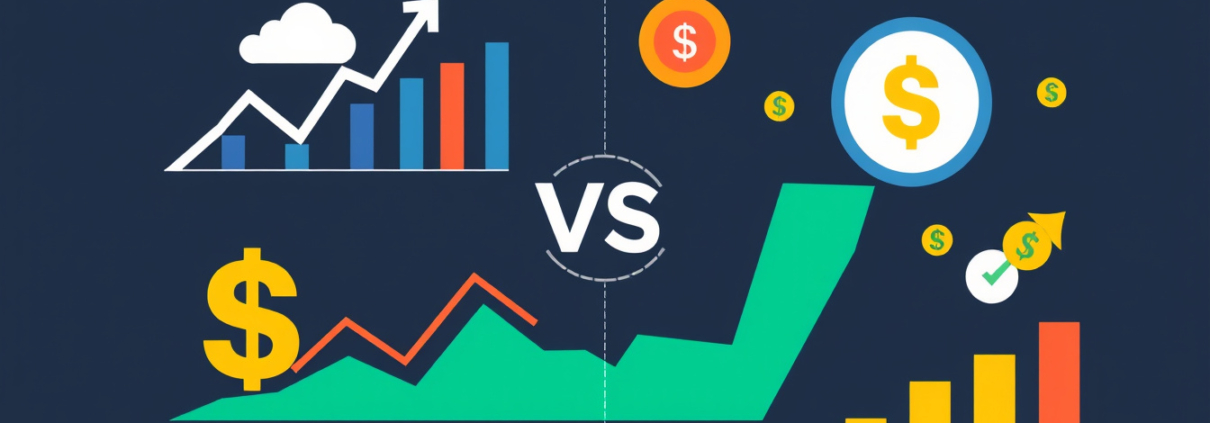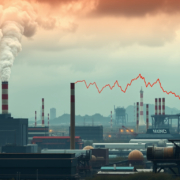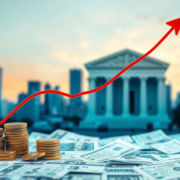📊 The Interplay Between Inflation and Market Dynamics 💰
Understanding the link between inflation and market dynamics helps us move in financial markets during unstable times. Recent clues show that inflation, interest rates, and economic growth work close together. They all affect market actions and shape results for investments.
Inflation and Market Valuations
Past market times prove that inflation alters market valuations. In 2000, when inflation was low, stock falls showed simple price drops. Today, inflation nears 8-9%, so indexes like the S&P 500 show higher numbers. When we adjust for inflation, the real market bottom after a crash can fall much lower than the shown numbers.
- In tough corrections, indexes like the S&P 500 have dropped about 50% in real terms from their peaks in bear markets.
- Markets sometimes fall more than the basic “fair value” of the asset.
- Inflation pushes up shown prices even if real prices drop far more.
Market Behavior in Bubbles and Busts
Most of the time, the stock market reacts well to true company values. Near 80% of the time, the market shows fair judgments. In the remaining 15-20%, a kind of over-optimism makes bubbles form. In these bubbles, prices do not match earnings or sound expectations. The market will:
- Assume future profit and perfect conditions.
- Miss the fact that good times tend to change.
- Drop hard when bubbles break and reset the true values.
A good example is Amazon in 2000. Despite rising sales, its price fell by 92%. This drop makes it hard for investors to see market moves only through simple business facts.
The Role of the Fed and Interest Rates
The Fed affects market moves by changing interest rates and managing inflation. History shows:
- The Fed often misses the strength of inflation. It acts late and sometimes off the mark.
- Low interest rates make credit easy. This helps deals grow and makes stocks and houses look more expensive.
- While low inflation and steady growth help the Fed, it often does not boost growth in real life.
- Long periods of low rates widen the gap between rich and poor. This shift can weaken long-term growth.
Parallels with the 1970s: Stagflation Concerns
Many now worry about a time like the 1970s, when inflation stayed high as growth barely moved. In that decade:
- Big jumps in oil costs raised everyday prices.
- Economic growth got slower while price rises stayed high.
- Supply shocks hit energy, food, and fertilizer hard.
Today, oil costs have nearly tripled. Geopolitical events, such as the Ukraine crisis, add extra pressure to supplies. In turn, markets expect a recession might let the Fed use easier money rules again. This hope can push up prices for a time.
Demographic and Structural Challenges
Today’s economic tests differ from those in the 1970s. Modern risks come with:
- Older populations and fewer births in rich countries, which makes the workforce shrink.
- Shortages of labor that slow down growth.
- Limits on resources that push up prices and cost more for making goods.
These factors may lead to slow growth with steady inflation. This mix makes policy fixes and forecasts more difficult to plan.
Key Takeaways
- Inflation adjustments change the real market values and hide the truth behind shown prices.
- Market bubbles come from too much hope that ignores true business data. They usually end with harsh drops.
- The Fed’s role stays important, but it often acts too late when inflation grows.
- The 1970s show us risks from high prices and weak growth during energy price jumps and tense global events.
- Structural issues like fewer workers and resource limits add to risks and make long-term growth hard.
FAQs
Q1: How does inflation affect stock market valuations?
A1: Inflation makes the shown prices higher. When we look at real prices after adjusting, we see that market drops often go deeper than the numbers suggest.
Q2: Why do markets sometimes seem not to trust basic facts and create bubbles?
A2: When investors feel too much hope, they plan for perfect futures. This causes prices to jump well above real earnings until the market must correct them.
Q3: What lessons can one learn from the 1970s?
A3: The 1970s taught that shocks like rapid oil price jumps can raise prices while slowing growth. Today, similar moves warn us of the tough match between high prices and little growth, which makes decisions hard for those in charge.









